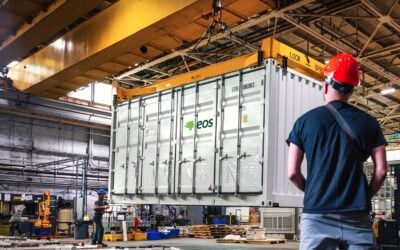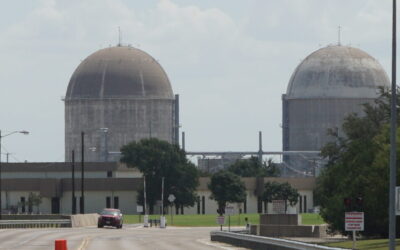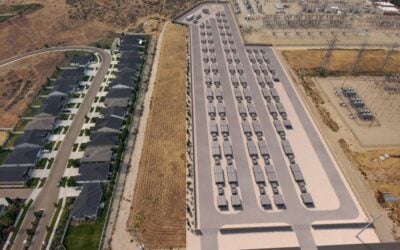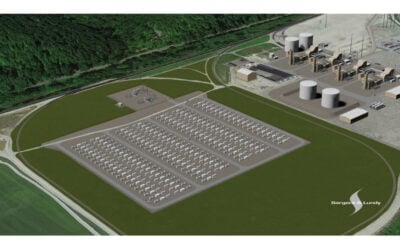
Clean energy loan and grant activity from the US Department of Energy (DOE) and its Loan Programs Office (LPO) has soared around the election of Donald Trump, analysis by Energy-Storage.news shows, with officials reportedly keen to get deals over the line before the new administration comes in.
The election of Donald Trump for a second term as president sent shockwaves through the clean energy industry, and the pace of federal grants and loan agreements for clean energy projects in the US has accelerated dramatically in the period around and after the election (5 November). The outgoing Biden-Harris administration substantially increased federal funding and support for clean energy via the Inflation Reduction Act (IRA) and the Bipartisan Infrastructure Law.
Enjoy 12 months of exclusive analysis
- Regular insight and analysis of the industry’s biggest developments
- In-depth interviews with the industry’s leading figures
- Annual digital subscription to the PV Tech Power journal
- Discounts on Solar Media’s portfolio of events, in-person and virtual
The new administration will enter office in early January, and numerous sources have said that officials are in a rush to get clean energy projects funded before any potential rescinding or shrinking of the DOE and LPO’s grant and loan authority for clean energy.
Trump has picked oil executive Chris Wright as his nominee to be the secretary of energy, and in a speech in September promised to rescind all unspent funds from the IRA while influential right-wing think tanks have called for a close of the LPO.
LPO’s funding for clean energy up by 50% since mid-November
As of 15 November, when a DOE spokesperson told Energy-Storage.new it would be ‘irresponsible’ for any government to turn its back on announced support for clean energy projects, the LPO had provided some US$37.05 billion in loans across 28 projects (16 conditional loan commitments and 12 closed loans).
The department is headed up by industry veteran Jigar Shah, and saw its loan authority increase substantially under the Biden-Harris administration.
Since the 15 November statement, three huge conditional commitments have been made, to electric vehicle (EV) manufacturer Rivian, lithium-ion gigafactory project Starplus Energy (a Samsung SDI and Stellantis JV) and high-voltage transmission line project Grain Belt Express, totalling a combined US$18.97 billion. And zinc battery firm Eos Energy Energy has seen its US$330 million conditional commitment close, covered separately today.
Those three new conditional commitments alone increase the LPO’s activity under Biden-Harris by around 50%, to US$56.02 billion.
A conditional commitment still requires an environmental review, and meeting certain technical, legal, environmental, and financial conditions to proceed to a closed loan.
Two days after the election of Trump, on 7 November, it had closed on a conditional commitment for a US$475 million loan to battery recycler Li-Cycle (a loan which had been criticised in the past).
Half of LPO’s activity under Biden-Harris has been since October 2024
Polling data and expert predictions started pointing to a Trump win in October, meaning we can speculate that deal-making as early as then may have been done with an eye on a change in government.
If we consider deals done in October and November 2024 and December so far, a staggering half of the LPO’s US$56.02 billion in conditional commitment and closed loans have been done in that time period.
Six conditional commitments totalling US$22.92 billion have been announced for Rivian, Grain Belt, Starplus, EV charging network EVgo, and sustainable aviation fuel projects from Montana Renewables and Gevo since 1 October.
Meanwhile, five closed loans have been approved totalling a combined US$4.05 billion, for Eos, Li-Cycle, AES’ Marahu solar-and-storage project in Puerto Rico, Lithium Americas Corp’s Thacker Pass lithium processing project in Nevada, and a methane emissions monitoring network from LongPath Technologies.
Those 11 loans combined total US$26.97 billion, 53% of the total US$56.02 billion in loans announced to-date at the time of writing.
It is not quite accurate to say that this therefore means the amount has also doubled since 1 October, since the closed loans would have counted in the LPO’s conditional commitments previously. Considering the closed loans as ‘new’ ones would mean double-counting and over-estimating the total increase.
LPO and DOE grants have soared year-on-year
Another way to assess the extent to which there has been a pick-up in loans from the LPO and grants and other funding from the broader DOE is to compare the activity from October to early December 2024 to the same period last year. Doing so shows a significant jump in funding activity, though small, high-value deals may skew the numbers, so take the significance of these with a bit of a pinch of salt.
In November and December 2024 so far, a total of US$24.57 billion has been announced in loans and grants for 15 clean energy projects. That is 15 times higher than the same period in 2023, when around US$1.6 billion was announced for 13 projects counted.
The five loans previously mentioned (Eos, Li-Cycle, Rivian, Grain Belt and Starplus) totalling US$19.745 billion account for 80% of the figure, with grants from the DOE totalling US$4.825 billion.
Those grants went to a wide variety of projects, including US$2.2 billion for green hydrogen, US$2.4 billion for hyrogen-related rail, and smaller ones covering everything from hydropower and wholesale electricity markets to mixed algae for biofuels and battery recycling.
Sub-US$1 million deals were not included in our analysis, nor were grants for nuclear energy or general scientific research, while new funding opportunity announcements were also excluded.
Looking at the October data, there is also a jump, though nowhere near as big. A total of US$12.852 billion was announced for projects in October 2024, split 57:43 between loans and grants. That is 77% higher than the US$7.259 billion in October 2023. However, 96% of October 2023’s figure is from the US$7 billion in grant funding announced for numerous green hydrogen hubs across the country.
The LPO does publish monthly activity reports but these only detail loan applications, not agreements. You can see the latest for November here, which showed a total US$324 billion of loan applications.
See our zoom-able and scroll-able table detailing all of the activity since 1 October, 2024, below.






